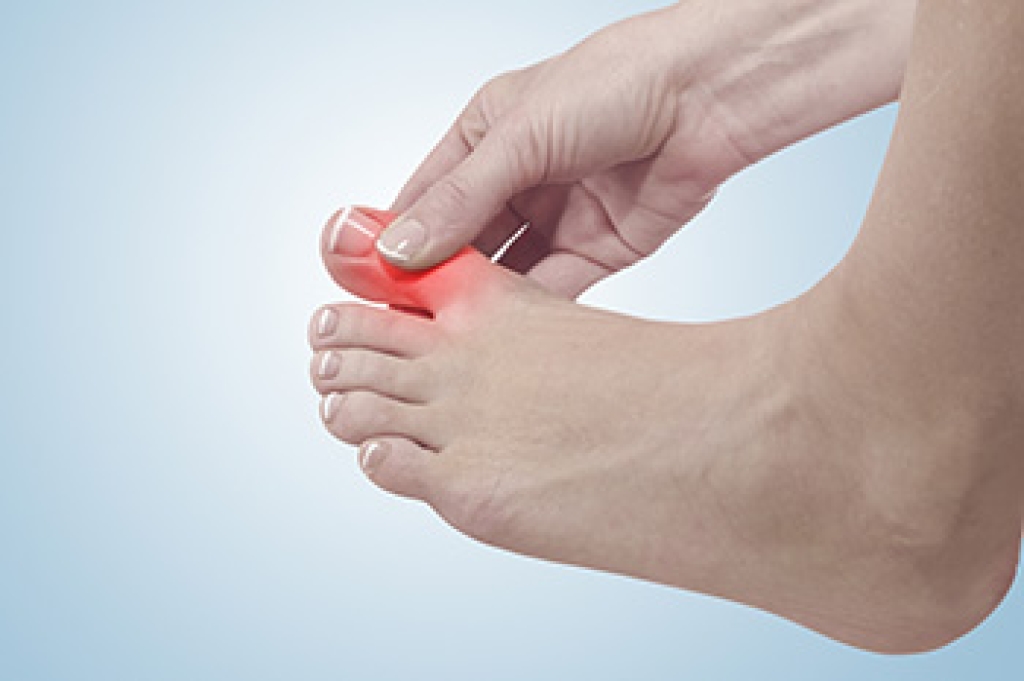
Different toes from the big toe to the small pinky toe can all be impacted by various afflictions of the feet. Gout is one such foot condition that can impact the toes of the feet. In particular, gout can have a specific impact on the big toe. Gout is a specific kind of arthritis that is very common. It is an inflammatory condition that can affect the joints of the toes. When gout impacts the big toe an individual can experience severe, intense pains in the big toe joint. Swelling on the outside of the big toe is also common, as well as noticeable discoloration. Since the big toe plays such an important role in helping individuals walk, gout in the big toe can make motion very difficult. If you are prone to gout attacks and have developed this kind of arthritis in the big toe, it might also be common to experience some kind of swelling. If you are concerned about developing gout in the big toe, contact a podiatrist today for more information.
Gout is a foot condition that requires certain treatment and care. If you are seeking treatment, contact one of our podiatrists from Westside Podiatry Center, LLP. Our doctors will treat your foot and ankle needs.
What Is Gout?
Gout is a type of arthritis caused by a buildup of uric acid in the bloodstream. It often develops in the foot, especially the big toe area, although it can manifest in other parts of the body as well. Gout can make walking and standing very painful and is especially common in diabetics and the obese.
People typically get gout because of a poor diet. Genetic predisposition is also a factor. The children of parents who have had gout frequently have a chance of developing it themselves.
Gout can easily be identified by redness and inflammation of the big toe and the surrounding areas of the foot. Other symptoms include extreme fatigue, joint pain, and running high fevers. Sometimes corticosteroid drugs can be prescribed to treat gout, but the best way to combat this disease is to get more exercise and eat a better diet.
If you have any questions, please feel free to contact one of our offices located in Liverpool, Camillus, Skaneateles, Oswego, and Cicero, NY . We offer the newest diagnostic and treatment technologies for all your foot care needs.




